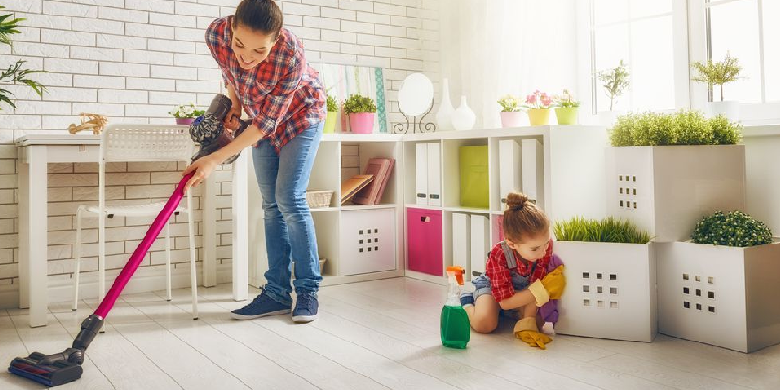Maintaining a healthy home environment is essential for our overall well-being. We spend a significant amount of time indoors, and the air quality and the presence of toxins in our homes can have a significant impact on our health. From allergies and asthma to more severe health problems, poor air quality and exposure to toxins can lead to a range of health issues
Importance of a Healthy Home Environment
A healthy home environment is essential for our overall well-being, and it can have a significant impact on our physical and mental health. We spend a significant amount of time in our homes, and the air quality and the presence of toxins in our homes can affect our health in several ways.
First and foremost, a healthy home environment can help prevent or mitigate health problems such as allergies, asthma, and respiratory illnesses. Exposure to indoor air pollution and toxins can lead to coughing, wheezing, and shortness of breath, which can be particularly dangerous for people with pre-existing respiratory conditions.
Moreover, indoor air pollution has been linked to more severe health problems such as lung cancer, heart disease, and stroke. According to the World Health Organization (WHO), indoor air pollution is responsible for approximately 4.3 million deaths globally each year. This is a staggering number, and it underscores the importance of creating a healthy home environment.
A healthy home environment can also have a positive impact on our mental health. Research has shown that exposure to natural light, greenery, and fresh air can improve our mood and reduce stress levels. A cluttered and poorly ventilated home, on the other hand, can lead to feelings of anxiety and depression.
Creating a healthy home environment can also help save money in the long run. By reducing the use of toxic cleaning products and other harmful chemicals, you can minimize the risk of costly health problems. By using energy-efficient appliances and taking steps to reduce energy consumption, you can lower your utility bills and reduce your carbon footprint.

Identifying Common Toxins in the Home
Identifying common toxins in the home is an essential step in creating a healthy home environment. Toxins can be found in a wide range of household products, and exposure to these chemicals can lead to a range of health problems, from minor irritations to severe illnesses. Here are some common toxins found in the home:
- Cleaning Products: Many household cleaning products contain harsh chemicals such as ammonia, bleach, and phosphates, which can irritate the skin, eyes, and respiratory system. Using natural cleaning products, such as vinegar and baking soda, can help reduce exposure to these toxins.
- Pesticides: Pesticides are commonly used in households to control insects, rodents, and other pests. However, exposure to these chemicals can be harmful to humans and pets, causing headaches, dizziness, and other symptoms. Using natural pest control methods or hiring a professional exterminator who uses non-toxic methods can help reduce exposure to pesticides.
- Paint: Paints contain volatile organic compounds (VOCs) that can off-gas for months after application, leading to respiratory problems and other health issues. Choosing low-VOC or no-VOC paints and ensuring proper ventilation during and after painting can help reduce exposure to these toxins.
- Formaldehyde: Formaldehyde is commonly found in building materials, furniture, and household products such as air fresheners and cleaners. Exposure to formaldehyde can lead to respiratory problems and is a known carcinogen. Choosing formaldehyde-free products and ensuring proper ventilation can help reduce exposure to this toxin.
- Lead: Lead can be found in old paint, pipes, and household products. Exposure to lead can lead to developmental delays, learning disabilities, and other health problems, especially in children. Testing for lead and ensuring that old lead-based paint and pipes are removed can help reduce exposure to this toxin.
- Radon: Radon is a radioactive gas that can be found in soil and rock and can seep into homes through cracks in the foundation. Exposure to radon can lead to lung cancer. Testing for radon and ensuring proper ventilation can help reduce exposure to this toxin.

Reducing Toxins in the Home
Reducing toxins in the home is essential for creating a healthy living environment. Natural cleaning products can be used instead of harsh chemicals to reduce exposure to toxic fumes. Clutter should be reduced as it can harbor dust and other allergens that can cause respiratory problems.
Proper ventilation can improve indoor air quality by increasing the circulation of fresh air. Cigarette smoke should be eliminated as it contains harmful chemicals that can lead to respiratory problems. Indoor plants can help purify the air by removing toxins and increasing oxygen levels.
It is also important to avoid synthetic fragrances as they can contain harmful chemicals. Household chemicals should be stored and disposed of properly to reduce the risk of exposure to toxins. Regular cleaning and maintenance can help prevent the buildup of dust and other allergens.
By taking these steps to reduce toxins in the home, we can create a safer and healthier living environment for ourselves and our families.

Improving Air Quality in the Home
Improving air quality in the home is crucial for our health and well-being. Poor air quality can cause a range of health problems, including respiratory issues, allergies, and other illnesses. Here are some ways to improve air quality in the home:
Air Purifiers
Air purifiers are an effective way to remove pollutants and allergens from the air. They work by using filters to trap particles in the air, such as dust, pollen, and pet dander. Some air purifiers also use UV light or electrostatic charges to kill bacteria and other microorganisms. Choose an air purifier that is appropriate for the size of the room and the type of pollutant you want to remove.
Proper Ventilation
Proper ventilation is essential for improving indoor air quality. Ventilation helps to remove stale air and bring in fresh air from outside. This can be achieved by opening windows, using exhaust fans, and ensuring that air filters are regularly cleaned and replaced.
Removing Sources of Indoor Air Pollution
Many household products, such as cleaning products, paints, and furniture, can release volatile organic compounds (VOCs) into the air. These chemicals can cause respiratory problems and other health issues. Choosing low-VOC or no-VOC products and ensuring proper ventilation can help reduce exposure to these toxins. You can also reduce the use of products that contain fragrances, such as air fresheners and candles, which can also release VOCs.
Humidifiers and Dehumidifiers
Proper humidity levels can help prevent the growth of mold and other allergens. Humidifiers can be used in dry climates or during the winter months to add moisture to the air, while dehumidifiers can be used in humid climates or during the summer months to remove excess moisture from the air. Monitor the humidity levels in your home and adjust your use of humidifiers and dehumidifiers accordingly.
Maintaining Proper Humidity Levels
Maintaining proper humidity levels is essential for improving indoor air quality. The ideal humidity level is between 30% and 50%. High humidity can lead to the growth of mold and other allergens, while low humidity can cause dry skin and respiratory problems. You can use a hygrometer to measure the humidity levels in your home and adjust the use of humidifiers and dehumidifiers accordingly.
Additional Tips for a Healthy Home Environment
Along with reducing toxins and improving air quality, there are several additional tips for creating a healthy home environment:
- Avoid Synthetic Fragrances: Synthetic fragrances can be found in many household products, including air fresheners, candles, and cleaning products. These fragrances can contain harmful chemicals that can cause respiratory problems and other health issues. Choosing fragrance-free or naturally scented products can help reduce exposure to these toxins.
- Test for Radon: Radon is a radioactive gas that can seep into homes through cracks in the foundation. Exposure to radon can lead to lung cancer. Testing for radon and ensuring proper ventilation can help reduce exposure to this toxin.
- Proper Storage and Disposal of Household Chemicals: Household chemicals should be stored in a safe and secure location, away from children and pets. They should also be disposed of properly to reduce the risk of exposure to toxins. You can check with your local waste disposal facility for guidelines on how to properly dispose of household chemicals.
- Regular Cleaning and Maintenance: Regular cleaning and maintenance can help prevent the buildup of dust, mold, and other allergens. This can include vacuuming, dusting, and wiping down surfaces with natural cleaning products.
- Reduce Electromagnetic Radiation: Electromagnetic radiation can come from a variety of sources, including cell phones, Wi-Fi routers, and other electronic devices. Exposure to electromagnetic radiation has been linked to headaches, fatigue, and other health problems. You can reduce exposure to electromagnetic radiation by turning off electronic devices when not in use, using wired connections instead of wireless connections, and limiting cell phone use.

